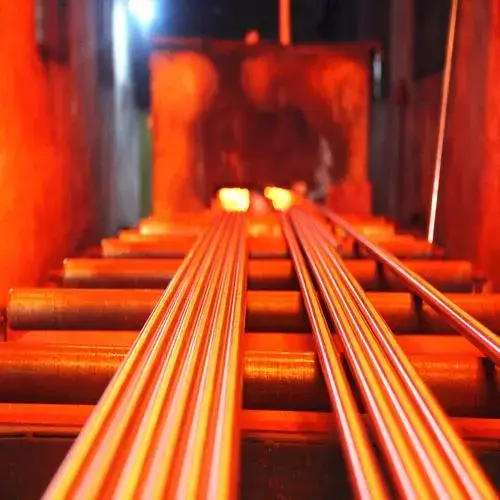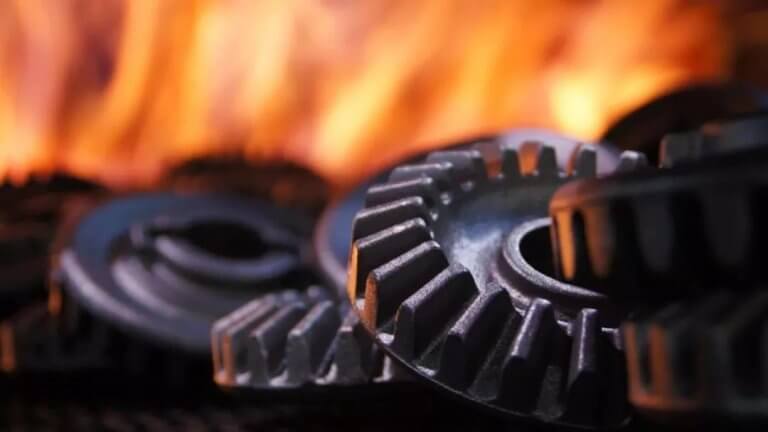In CNC machining, heat treatment is a crucial process for enhancing the performance and lifespan of workpieces. This article provides a comprehensive analysis of nine common heat treatment methods, including annealing, normalizing, quenching, tempering, aging treatment, surface hardening, nitriding, carbonitriding, and carburizing. By detailing the purpose, process, and applications of each method, we aim to help you better understand and select the appropriate heat treatment technique, thereby improving machining quality and product performance.

Annealing is a metal heat treatment process, whose main purpose is to reduce the hardness of metal materials, enhance their plasticity and toughness, thereby improving their workability, relieving internal stresses and inhomogeneous structures, stabilizing dimensions, and preventing deformation.

Normalizing is a heat treatment process aimed at eliminating internal stresses generated during casting, forging, and welding, improving machinability, and homogenizing the structure. The process involves heating the steel above its critical temperature, holding it, and then air cooling it.

Quenching is a heat treatment process designed to increase the hardness and strength of steel, although it reduces toughness. The process involves heating the steel above its critical temperature, holding it, and then rapidly cooling it (commonly using water, oil, or air).

Tempering is a heat treatment process aimed at eliminating internal stresses after quenching, adjusting the hardness and toughness of the steel to achieve the desired mechanical properties. The process involves heating the quenched steel to a temperature below its critical point, holding it, and then cooling it.

Aging treatment is a heat treatment process aimed at stabilizing the dimensions of the metal, increasing its mechanical strength and hardness, and reducing deformation. The process involves subjecting the metal to long-term low-temperature treatment to induce microstructural changes.

Surface hardening is a heat treatment process designed to increase the hardness and wear resistance of only the surface of the metal while maintaining the toughness of the core. The process involves rapidly heating the metal surface using methods such as flame or induction heating, followed by rapid cooling.

Nitriding is a heat treatment process that involves infusing nitrogen atoms into the metal surface to form a hardened layer, significantly enhancing its surface hardness and wear resistance. The process involves heating the metal in a nitrogen-containing medium for several hours before cooling.

Carbonitriding is a heat treatment process aimed at enhancing the surface hardness and wear resistance of metals while maintaining core toughness. The process involves placing the metal in a carbon and nitrogen-containing medium at high temperatures to infuse both elements into the surface.

Carburizing is a heat treatment process that increases the surface hardness and wear resistance of metals by infusing carbon atoms into the surface while maintaining core toughness. The process involves placing the workpiece in a carbon-containing medium, heating it to 850°C to 950°C to allow carbon atoms to penetrate the metal surface, followed by quenching and tempering.
Annealing is a heat treatment process primarily used to reduce the hardness of metals, increase their plasticity and toughness, eliminate internal stresses, refine grain structure, and improve machinability. The process involves heating the metal to a suitable temperature, holding it for a period, and then slowly cooling it down.
Normalizing is a heat treatment process aimed at eliminating internal stresses generated during casting, forging, and welding, improving machinability, and homogenizing the structure. The process involves heating the steel above its critical temperature, holding it, and then air cooling it.
Quenching is a heat treatment process designed to increase the hardness and strength of steel, although it reduces toughness. The process involves heating the steel above its critical temperature, holding it, and then rapidly cooling it (commonly using water, oil, or air).
Tempering is a heat treatment process aimed at eliminating internal stresses after quenching, adjusting the hardness and toughness of the steel to achieve the desired mechanical properties. The process involves heating the quenched steel to a temperature below its critical point, holding it, and then cooling it.
Aging treatment is a heat treatment process aimed at stabilizing the dimensions of the metal, increasing its mechanical strength and hardness, and reducing deformation. The process involves subjecting the metal to long-term low-temperature treatment to induce microstructural changes.
Surface hardening is a heat treatment process designed to increase the hardness and wear resistance of only the surface of the metal while maintaining the toughness of the core. The process involves rapidly heating the metal surface using methods such as flame or induction heating, followed by rapid cooling.
Nitriding is a heat treatment process that involves infusing nitrogen atoms into the metal surface to form a hardened layer, significantly enhancing its surface hardness and wear resistance. The process involves heating the metal in a nitrogen-containing medium for several hours before cooling.
Carbonitriding is a heat treatment process aimed at enhancing the surface hardness and wear resistance of metals while maintaining core toughness. The process involves placing the metal in a carbon and nitrogen-containing medium at high temperatures to infuse both elements into the surface.
Carburizing is a heat treatment process that increases the surface hardness and wear resistance of metals by infusing carbon atoms into the surface while maintaining core toughness. The process involves placing the workpiece in a carbon-containing medium, heating it to 850°C to 950°C to allow carbon atoms to penetrate the metal surface, followed by quenching and tempering.

You’re one step from the factory-direct price of part manufacturing services.